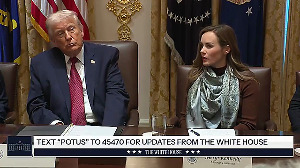'But can it afford to present a scenario within the existing legal framework of fiscal consolidation?', asks A K Bhattacharya.

Taxation and spending outlays usually become key focus areas of all government budgets as they directly impact both the taxpayers and non-taxpayers.
But for the Union Budget for 2021-2022, to be presented on February 1, there will be an additional focus area.
This pertains to the need for reviewing the legal framework for the government's fiscal consolidation road map.
Remember that in its first term, the Narendra Modi government had introduced key amendments to the Fiscal Responsibility and Budget Management (FRBM) Act.
The amendments, introduced in 2018 through the Finance Bill tabled along with the Budget, required the Union government to reduce its total debt to 40 per cent of gross domestic product by 2024-2025.
They also mandated a reduction in the overall government debt (including the Centre and the states) to 60 per cent of GDP and the Centre's additional guarantees with respect to any loan on security of the Consolidated Fund of India were capped at 0.5 percentage point of GDP in any financial year.
More importantly, the amended law required the Centre to bring down its fiscal deficit to 3 per cent of GDP by March 2021.
It allowed a deviation in the deficit of up to 0.5 percentage point subject to specific circumstances, such as a national calamity, farming distress or a structural policy change.
It also barred any deviation of more than 0.5 percentage point in the deficit level in any year.
Further, it mandated that any deviation would require the government to explain to Parliament the reasons for which the actual fiscal deficit was wider than the deficit projected at the start of the year.
The coming Budget's urgency to review the framework of fiscal consolidation will arise from five factors.
One, the provisional actuals for the government's fiscal performance in 2019-2020 show that the deviation in the deficit has been much more than the permissible limit of 0.5 percentage point.
It's true that the revised estimate for 2019-2020 showed the fiscal deficit at 3.8 per cent of GDP, against the budget estimate of 3.3 per cent.
But the provisional actuals show that the deficit is about 4.6 per cent of GDP, substantially more than the target set under the amended FRBM Act.
What's worrying, the fiscal consolidation programme for 2020-2021 will take an even bigger hit. The targeted fiscal deficit of 3.5 per cent of GDP is set to widen.
Assuming that the contraction of the economy in nominal terms will be 5 per cent (7.5 per cent contraction in real terms and the deflator being 2.5 per cent) and the overall borrowing is contained at Rs 12 trillion, the fiscal deficit will not be less than 6.2 per cent of GDP.
Independent analysts, however, have pegged the fiscal deficit at anywhere between 7 and 9 per cent of GDP.
Thus, the deviation in 2020-2021 will be much higher than that in 2019-2020, making a mockery of the FRBM law.
The second factor weighing on the minds of those in charge of the finance ministry is the realisation that even the medium-term fiscal consolidation targets set under the amended FRBM Act are now impossible to achieve.
While conceding the slippage in 2020-2021, the Medium Term Fiscal Policy Cum Fiscal Policy Strategy Statement, presented last February, had stated that the 'government will return to the path of fiscal consolidation in the medium term' by aiming a fiscal deficit of 3.3 per cent of GDP in 2021-22 and 3.1 per cent of GDP in 2022-2023.
These targets will now have to be revised in light of the stress public finances have gone through this year.
The Budget will have to provide a more realistic road map. But can it afford to present a scenario within the existing legal framework of fiscal consolidation?
Thirdly, the target of reducing the Union government's total debt to 40 per cent of GDP by 2024-2025 will be extremely difficult to achieve, given the current level of debt and the enhanced borrowing that has already been undertaken in the current year and the additional borrowing that will be needed.
In 2018-2019, when the FRBM Act was amended, the Union government's total debt was 48.4 per cent of GDP.
For 2019-2020, the target was to reduce the debt level to 48 per cent of GDP, but the year ended with an increase to 50.3 per cent of GDP.
In the Budget for 2020-2021, the Centre's debt level was to be reined in at 50.1 per cent of GDP, but since the fiscal deficit could be double of what was originally projected, the debt level too would increase substantially by the end of March 2021.
And there is no way the debt targets of 48 per cent of GDP in 2021-2022 and 45.5 per cent of GDP in 2022-2023 can be achieved.
The next Budget will have to come up with a revised set of targets on debt that are more realistic and hence would be much higher than planned so far.
This too should call for a review of the target of bringing debt down to 40 per cent of GDP in three years.
Last February, the government had hoped for a reduction in debt because of increased revenue collections.
'With contraction of government deficit, there will be more room for private investment and capital inflows. Low levels of inflation will also benefit the government in the medium term by reducing the cost of fresh borrowings of the government of India, resulting in reduction in interest payout,' the medium-term fiscal policy strategy statement had stated.
All those assumptions and expectations have no justification in the changed context of today.
Fourth, the government needs to worry about the additional guarantees it provides to any loan upon the security of the Consolidated Fund of India.
In 2018-2019, the net accretion to the stock of guarantees amounted to 0.4 per cent of GDP, within the permissible cap of 0.5 per cent of GDP.
The latest figures for 2019-20, available till January 2020, shows the net increase in the stock of such guarantees at 0.25 per cent of GDP.
This is a comfortable level, but given the pressure on government finances and the demand for providing more guarantees, it is likely the cap of 0.5 per cent of GDP will be breached in 2020-2021.
Finally, the amended FRBM Act poses a completely new challenge, arising quite ironically out of the expected bounce back of the Indian economy in 2021-2022.
The law stipulates that the fiscal deficit must be reduced by at least 0.25 per cent of GDP in case the real output growth of a quarter increases by at least three percentage points above its average of the previous four quarters.
This reduction in the deficit will be inescapable next year. It is certain that the quarterly growth rates in 2021-2022 will easily exceed the average quarterly growth rates of 2020-2021 by more than three percentage points.
So, what options does the government have other than amending the FRBM Act yet again and setting fresh targets?
It would also be important for the new law to build in the required clause on whether the government needs to reduce the fiscal deficit in a year of recovery immediately after a massive contraction.
In short, it would be logical to expect the FRBM Act of 2003 to be completely overhauled in February to make the new targets realistic and appropriate to the economy's needs.
Perhaps, the creation of a fiscal council, an idea which has been mooted in various circles, could help in ensuring that all these issues are adequately addressed.
What kind of a fiscal council the Centre should create, of course, is another debate.
Feature Presentation: Rajesh Alva/Rediff.com











